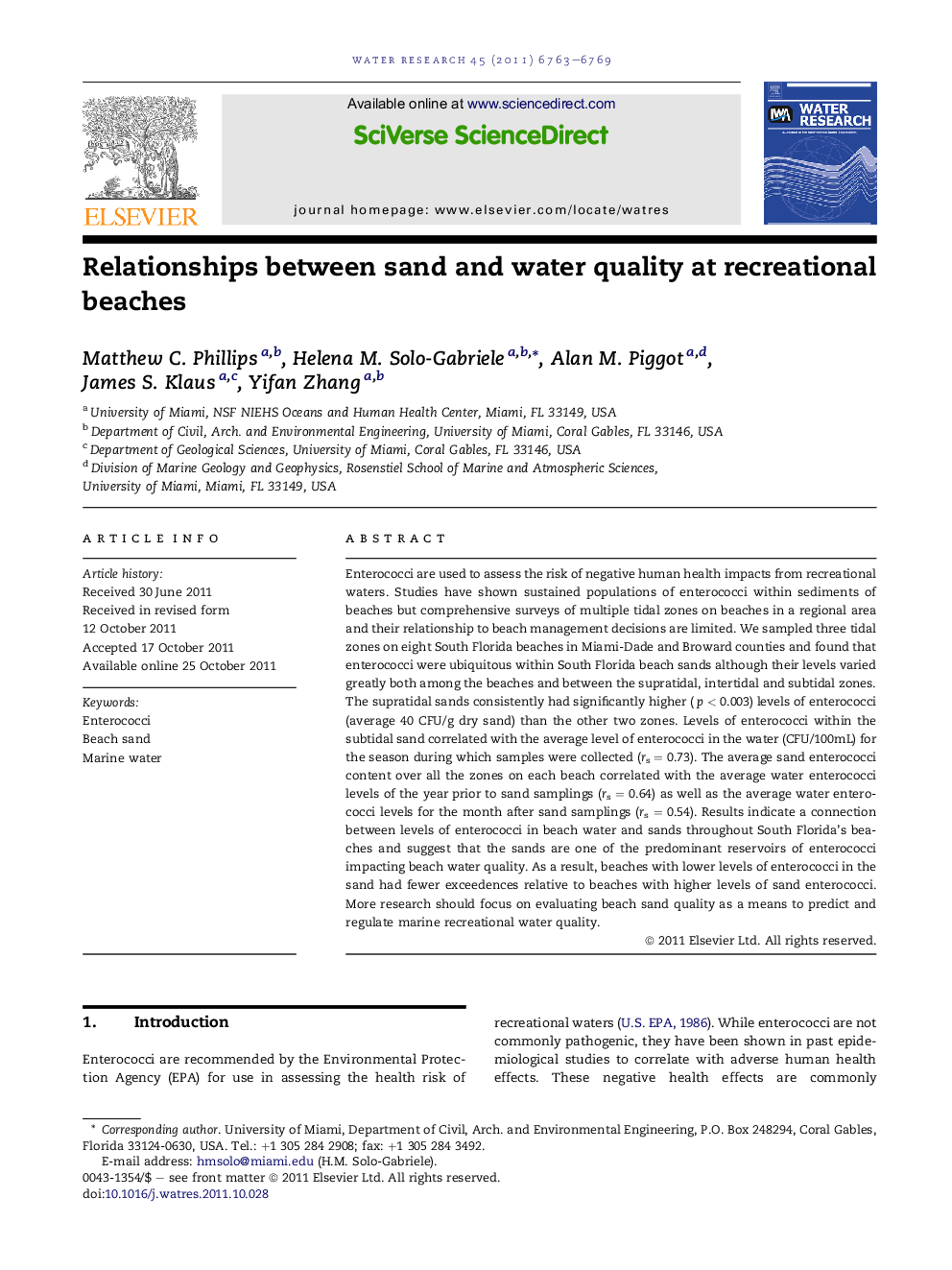| Article ID | Journal | Published Year | Pages | File Type |
|---|---|---|---|---|
| 4482574 | Water Research | 2011 | 7 Pages |
Enterococci are used to assess the risk of negative human health impacts from recreational waters. Studies have shown sustained populations of enterococci within sediments of beaches but comprehensive surveys of multiple tidal zones on beaches in a regional area and their relationship to beach management decisions are limited. We sampled three tidal zones on eight South Florida beaches in Miami-Dade and Broward counties and found that enterococci were ubiquitous within South Florida beach sands although their levels varied greatly both among the beaches and between the supratidal, intertidal and subtidal zones. The supratidal sands consistently had significantly higher (p < 0.003) levels of enterococci (average 40 CFU/g dry sand) than the other two zones. Levels of enterococci within the subtidal sand correlated with the average level of enterococci in the water (CFU/100mL) for the season during which samples were collected (rs = 0.73). The average sand enterococci content over all the zones on each beach correlated with the average water enterococci levels of the year prior to sand samplings (rs = 0.64) as well as the average water enterococci levels for the month after sand samplings (rs = 0.54). Results indicate a connection between levels of enterococci in beach water and sands throughout South Florida’s beaches and suggest that the sands are one of the predominant reservoirs of enterococci impacting beach water quality. As a result, beaches with lower levels of enterococci in the sand had fewer exceedences relative to beaches with higher levels of sand enterococci. More research should focus on evaluating beach sand quality as a means to predict and regulate marine recreational water quality.
Graphical abstractFigure optionsDownload full-size imageDownload high-quality image (177 K)Download as PowerPoint slideHighlights► Enterococci found in sand at all beaches sampled in this study. ► Enterococci levels consistently higher in supratidal sand. ► Multiple correlations found with levels in sand and time-averaged levels in water. ► Enterococci in sand correlate with beach closures. ► Enterococci in sand correlate with future enterococci levels in water.
